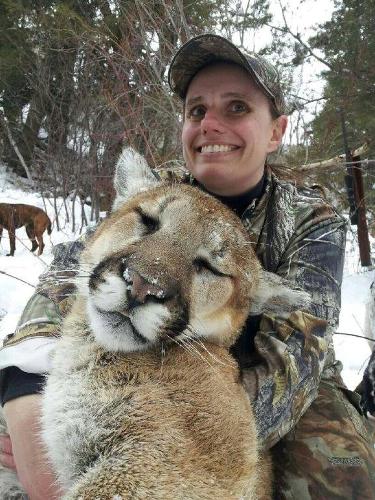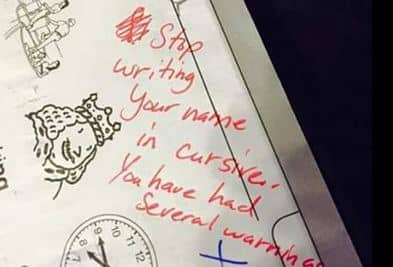You Don’t Have To Read Parenting Books To Be An Awesome Mom
Official library records show that I first borrowed Siblings Without Rivalry: How to Help Your Children Live Together So You Can Live Too, in September of 2012. My older son was four, and my younger son was 22 months old. My memories of this time are foggy, but I remember a great deal of construction by the former and a great deal of destruction by the latter. Screaming, crying, threats, tantrums, and more than one biting incident ensued. I thought things like, It will be so nice when the little one can talk more and build things and really play with his brother. They will be so happy to have each other if we can just get through this challenging time!
So when I saw this book on the parents’ shelf of the library’s children’s room, sandwiched between the board books and the stuffed animals and within easy reach of my beanbag chair (because once upon a time a brilliant librarian realized parents of young children had no hope of making it upstairs to the adult nonfiction shelves), I reached. I knew the authors’ names, Adele Faber and Elaine Mazlish, because they also wrote the classic How To Talk So Kids Will Listen & Listen So Kids Will Talk, a book I own but haven’t read. I’m sure that reading it would change my life.
I’m equally sure that if I’d read Siblings two years ago instead of renewing it three times before finally returning it in defeat, I’d be sitting pretty now. I read the opening chapters, and I’m here to tell you it’s well-written, engaging, filled with concrete examples and even cartoons for the visual learners. I stopped reading it because at the end of a long day of parenting a toddler and a preschooler, the last thing I wanted to do after wrestling them into bed was think about how I could be doing it better. I didn’t want to think about them at all.
I wanted to snuggle up with my husband on the couch and watch The Voice and, when I wasn’t occupied with shoving knockoff Pirate’s Booty into my mouth and washing it down with wine, make insightful suggestions about the contestants’ performances.
The other thing about the book: it was kind of a downer. Because even though we were trying our best, some of what we were doing was flat-out wrong. When our older son said something negative about the younger one, we disagreed. ”Of course you don’t hate your brother! You love him!” This, it turns out, is dismissive, and leads to pushing bad feelings down. These feelings will probably come out later in worse ways, like punching said brother.
The differences in their temperaments were striking, and I found them fascinating and talked about them a lot. Some of the differences seemed innocuous, like how the older one had climbed everything that could be climbed as a toddler and the younger one was simply not interested in climbing, but these qualities were accumulating into a narrative of a challenging child and an easy child. As the ”difficult” child in my sibling pair, I still find the stories of how I never slept and constantly threw tantrums annoying. I mean, I was somewhere between zero and three years old when these things happened. I don’t remember any of them. I turned into a well behaved, if sometimes witheringly sarcastic, teenager, and I’m a loving daughter and upstanding citizen now. If I ever made it to the last chapter, ”Making Peace with the Past,” maybe I’d figure it all out. But it was plain depressing that I was repeating patterns that annoyed me, and so I closed the book and turned on the TV and discussed the importance of song choice with my husband.
Exactly two years later, it caught my eye on the parents’ shelf again. I checked it out and dove in.
Once again, I tore through the first 50 pages feeling empowered, and then my pace slowed. We still try to talk our kids out of negative feelings they have toward each other, because it’s uncomfortable to hear them. I’ve backed off the comparisons, but fascinating new differences emerge every day, and I still find myself saying things out of their earshot like, ”I think I’ll sign X up for basketball, but Y says he’s not interested. He’s just not as interested in sports as his brother is.” These kinds of remarks have a way of snowballing, of pushing siblings into roles like the Bookworm and the Athlete. I needed to think, and I set the book aside. Instead of saying, ”Stop calling your brother annoying,” I tried responses like, ”Yeah, it annoys you when he plays with the ball that way.” They seemed to like it. It didn’t solve problems, exactly, but it seemed to help my son release some frustration so he could keep playing instead of escalating.
I renewed the book, and yet it languished. I still hadn’t made it to the section on how to intervene in fights, but things were going slightly better. I observed the differences between my kids but either kept them to myself or talked to my husband about them after the kids were in bed. I renewed the book again. Maybe I was ready for the chapter on fighting. But then the new season of The Voice started and there was more languishing. The book was overdue, but for ten cents a day, I’d hold onto it. I pushed aside the thought that I was preventing other parents from accessing it ”” parents who might actually read it in a timely fashion and then be better parents as a result.
Maybe I’d read it while the kids were playing nicely together and by the time their play deteriorated I’d rush in, bursting with knowledge about the correct way to handle the situation. But my phone was always handier and more appealing in those stolen moments. Then the copy of Rio 2 I’d ordered through interlibrary loan months earlier arrived, and I wouldn’t be allowed to pick it up until I returned all overdue materials. I said goodbye to long-term sibling salvation and hello to the short-term peace Rio 2 could provide. My husband assured me that this decision didn’t make us terrible parents. Sunday afternoon was lovely.
My guilt caught up to me on Monday, when I turned to Amazon Prime (vice of a generation) and spent $9.01 so I could own my very own copy. It arrived two days later. It looks great on the shelf next to How To Talk So Kids Will Listen and Listen So Kids Will Talk. Or, I should say, it makes me look great, like a parent who reads parenting books.
My six-year-old has discovered that the book has cartoons, and he likes to read them. ”What are they about?” I asked him, curious about what he was getting out of it. ”I can’t explain it,” he said, ”But it’s really good. You really need to read it.”






